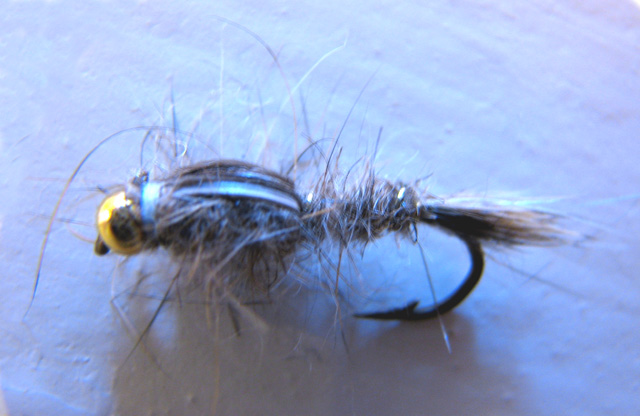Welcome to River Magic
Stillwater Slim on the Line ... Mar 19, 2008
|
Mayfly Cycle Part 1 – The Nymph
When we clean a trout for the frying pan we often find a mass of insects inside, mostly nymphs. When fish are feeding on the bottom of a stream or lake, such as early in the season, nymphs are usually the entree. Nymphs form a large part of a trout’s diet, so it makes great sense to fish a nymph imitation. I often tried this when my dry and wet flies failed to take trout. Usually my nymphs failed also, because I really didn’t understand how to fish them effectively. That was then. Now, a nymph is often my first choice.
My first revelation came when I began using a strike indicator. A strike indicator is a small bit of daylight fluorescent foam attached to the leader. They are practically weightless and function like a bait fisherman’s bobber, alerting the angler to the take. Often trout sort of inhale a nymph rather than grabbing it, so a strike indicator is a huge asset to the nymph fisherman. At last I experienced successful nymphing!
Next, I discovered brass bead-heads, a more recent invention. Beads weight the nymph making it head-heavy, causing it to dive head-first on slack line and swim up head-first when retrieved, a natural swimming nymph imitation. Retrieves can be fast or slow, and I discovered that often very slow (several minutes per retrieve) can be absolutely deadly on big lazy trout. The bead also sparkles like a trapped air bubble underwater, which is likely part of the allure.
The time-tested Hare’s Ear Nymph is a rough imitation. It is roughly the shape, colour and size of a mayfly nymph. The fuzzy dubbing suggests legs and gills of a swimming nymph, while the gold rib adds depth, flash, and the impression of segmentation. Fished properly in different sizes it can mimic nymphs of all types. It’s also quick, cheap, and easy to tie. If we add a brass bead it becomes a simple, effective “improved” version of the old, well known, impressionistic nymph pattern, consistently out-fishing ultra-realistic patterns. So, if your trout box has only one nymph pattern, this one, in 4 sizes, is a great choice.
Bead-Head Hare’s Ear Nymph
Hook: 1 or 2 X long shank nymph hook, size 8-14. Thread: Black or tan 6/0 or 8/0 Tail: Hare’s mask guard hairs Abdomen: Hare’s mask dubbing Rib: Oval gold tinsel over abdomen Wing: Mallard wing-quill (or any grey quill feather) segment tied over thorax Thorax: Hare’s mask dubbing Legs: Thorax dubbing picked out to simulate legs Head: Brass bead sized for hook (larger hooks require larger beads)
Brass beads have a hole sized for slipping over the hook barb and up the shank to the hook eye, which is the first step in tying a bead-head fly.
Please note that bead-headed nymphs technically are weighted flies, so they can’t legally be used in waters where unweighted flies are the rule, such as the St. Mary’s River and some other waters.
|
|||||||||||||

